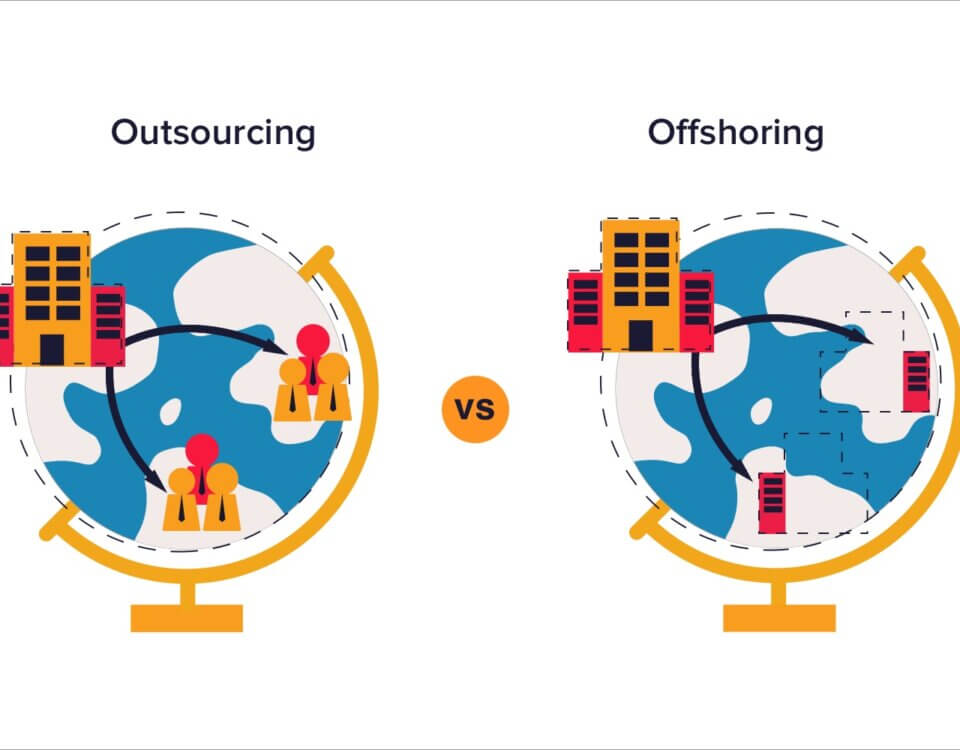
21st Century Marketing
June 1, 2018
4 Reasons Why Your Business Needs an Online Presence
October 10, 201818 Common Web Design Jargons
What every marketer needs to know

Have you ever sat at a table of web designers and found yourself starting to marvel at the speck of dust in the air because you couldn’t comprehend a single thing they were speaking? The amount of buzzwords and technical jargon in tech-speak is unbelievable, and tough for anyone to hardly keep up with - even for professional web designers.
Meanwhile, being a marketer means having to work with designers on creative projects, and at some point, you’re going to have to master this vocabulary to tackle discussions with your fellow designer. Here’s a list of 18 basic web design terminologies to help you get started with.

CMYK/RGB Colour Model
The initialism CMYK stands for Cyan, Magenta, Yellow, and Black. This set of colors is used in print design due to the way paper absorbs light, as opposed to the RGB colour model (Red, Green, Blue) which is used in web design due to how monitors transmit light.
Pantone
This is a color-matching system developed by the Pantone company commonly used in print design. Pantone is used to match printed colors to screen colours in digital design projects.
Domain
A domain is the name of a website that is associated with an IP address. Domains can be purchased and consist of any combination of letters, hyphens and numbers, and up to 26-63 characters long, depending on its extension (.com, .co, .net...).
Landing Page
As the name suggests, this is the first page that greets a visitor when they enter a website. More often than not, it is the main page of a website. Other times, an alternative landing page may be created to lead visitors to a specific page within the website - typical of advertising or marketing campaigns.
User Interface Design
User Interface (UI) Design is the design and layout of the elements on a screen. Some components of UI design are: Color, typography, layout, and style.
User Experience Design
User experience (UX) is the use of design tools and techniques to improve the user’s satisfaction when interacting with product or website. Some important aspects that affect a user’s experience on a site are: how quickly a screen loads (LINK), relevance of content and ease of navigation.

CSS
Cascading Style Sheets (CSS) is a piece of code or rule applied to HTML (psst, here), that decides the look and feel of elements within a website, which is separate from the actual content of a web page. CSS allow designers to decide how the elements within a web page will be displayed on the screen, such as the colour of text, the background of the page, position, shape and size.
HTML
HTML stands for HyperText Markup Language. Well, think of it as the language of the web, readable by the web browser, and used to display render content like text, images and links on a page. It contains markup tags that allow the designer to identify various parts of their content so that the various elements are differentiated accordingly.
Javascript
Do not confuse this with the Java programming language! That’s another thing for another time. But as its name suggests, JavaScript is a scripting language that allow designers to create advanced interactions on a web page. Examples include the popup dialogue boxes that prompt you on missing information in online application forms, or how it vibrates when you continuously enter the wrong password. Like CSS and HTML, JavaScript is a powerful programming language that represent the core foundation of the World Wide Web.
CMS
Content Management System (CMS) is a platform for the managers of a website to manage their content, such as site navigation, text content, images, and pages.
API
Application Programming Interface (API) is a small piece of code that enables different applications and systems to communicate and exchange information. It connects components around a system, and may be adopted by third-party programmers who wish to connect applications and systems together. For instance, an API can make a set of existing data in a system available to other places. E.g., you may want data in your CRM to be made available on your website as well. You website developer can then use an appropriate API that does just that to display the information on your site.
Plug-in
A plug-in is a third-party code that expands on the functionality of a website without having to modify the core coding of a site. It is often used along with a CMS or blogging platform.
Pixel
A pixel is the smallest element of an image reflected on a screen.
Pixels per Inch (PPI)
PPI is a measure of image resolution according to the number of pixels present in a specified section of the image.
Dots per Inch (DPI)
Similar to the pixel, dots are the smallest unit of measurement for the printing digital images. The higher the DPI, the higher the resolution of the printed digital object.
Spiders
In web design lingo, a spider is a program whose job is to store and collect all the information it can find on the internet through “jumping” from one link to another.
Sitemap
A sitemap is a page within a website containing of links to the important pages within a site. Having a sitemap on your site is a great tool for your site visitors, and a great way to ensure that search engine spiders are able to locate all the pages on your site.
This is not an exhaustive list of all the design jargons in the book of web design terminologies, but there's always a first step for everyone! If you feel that there is an important term that should be on this list, let us know. Otherwise, feel free to chat with us on any projects you have on hand.




